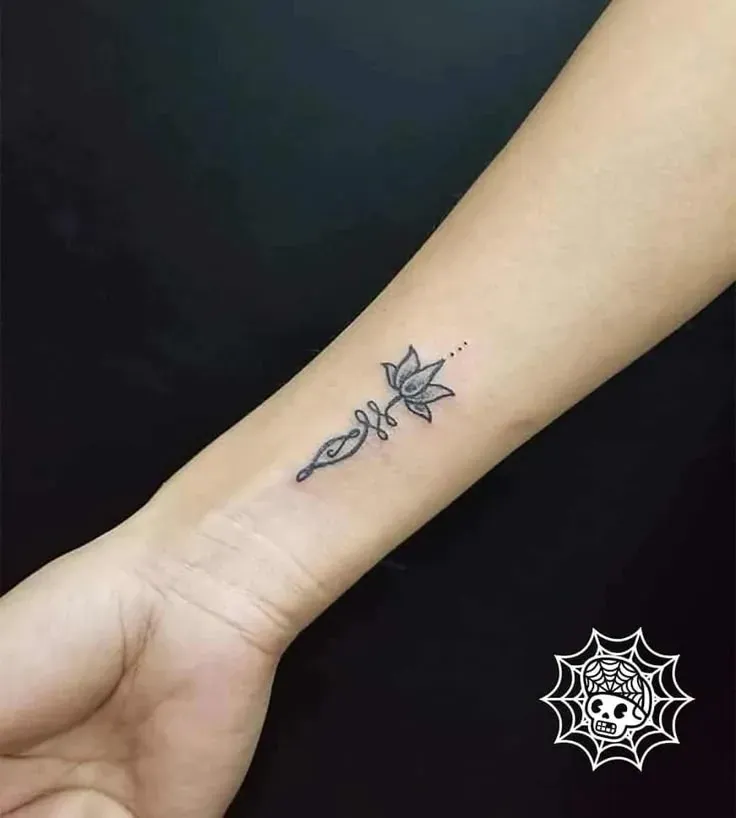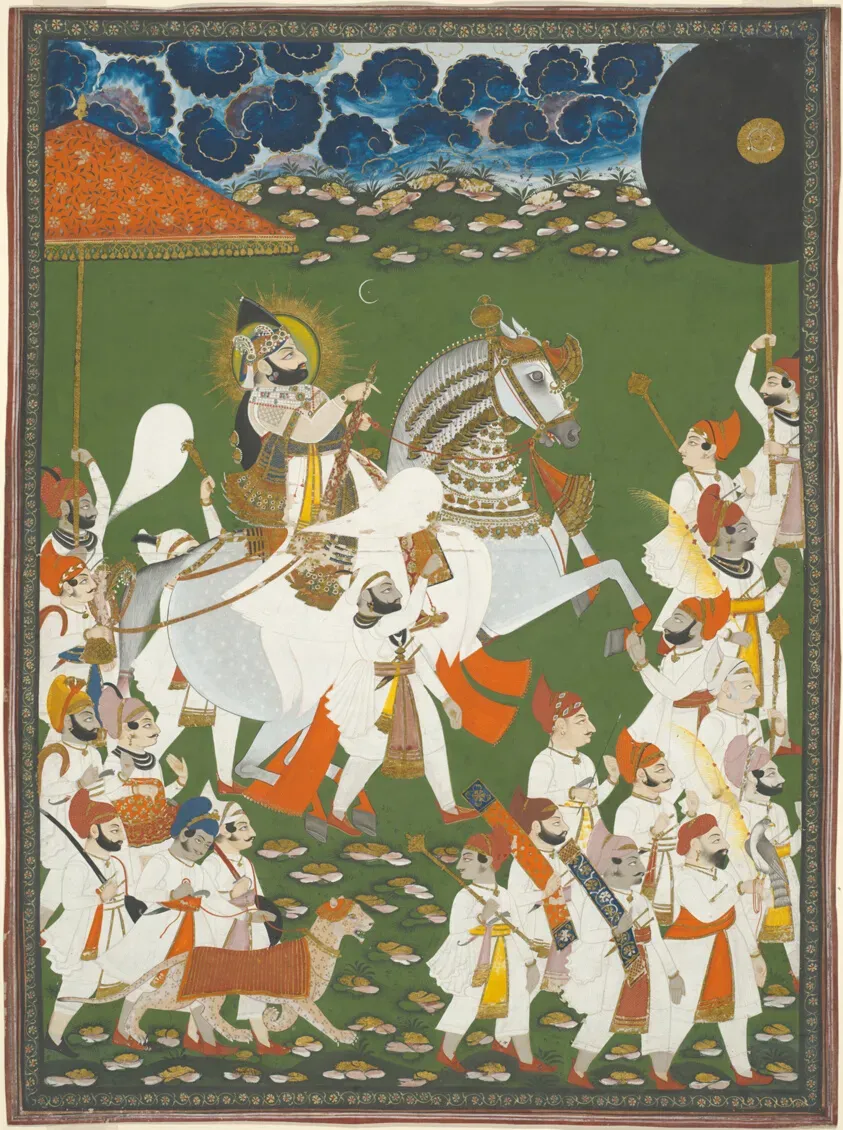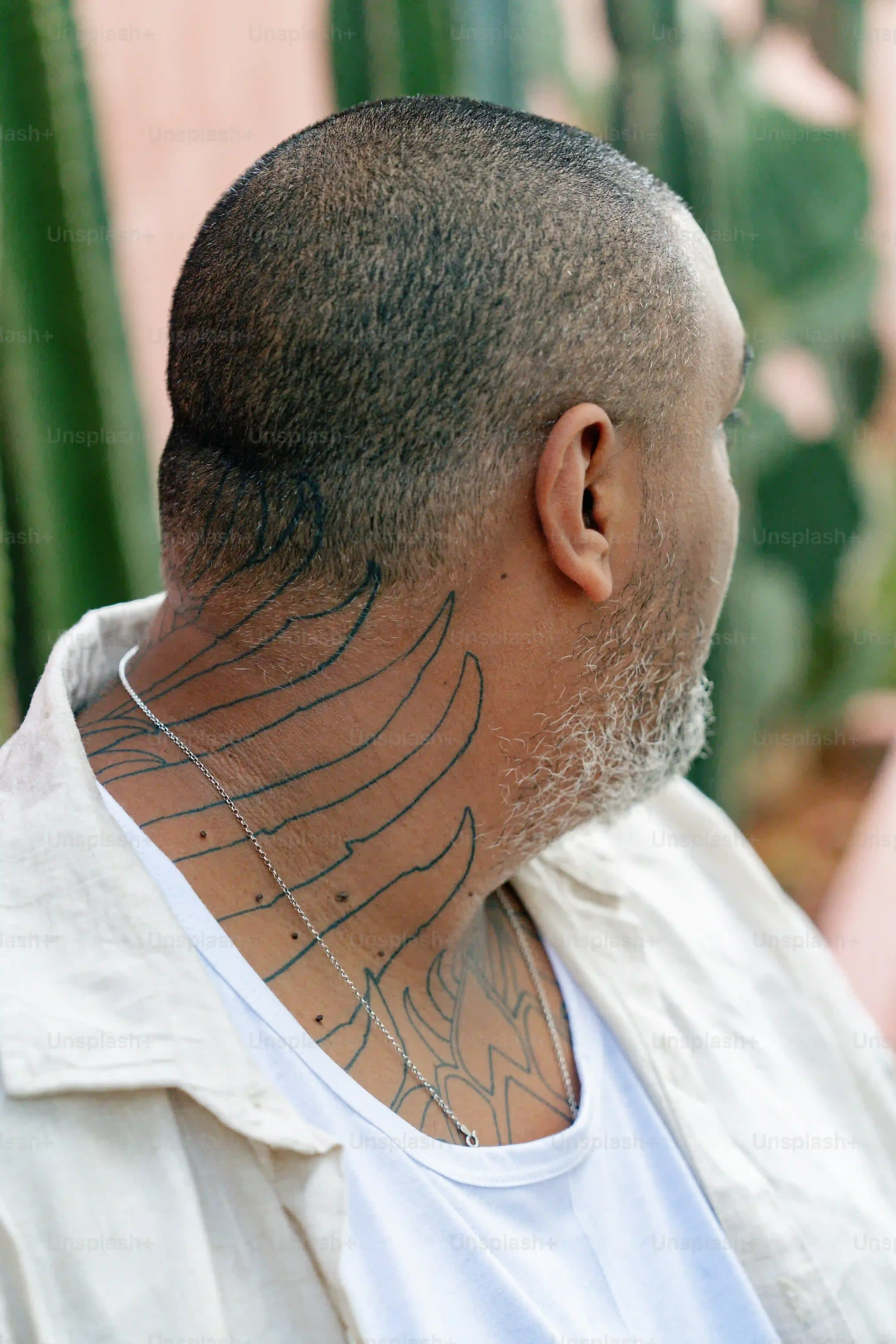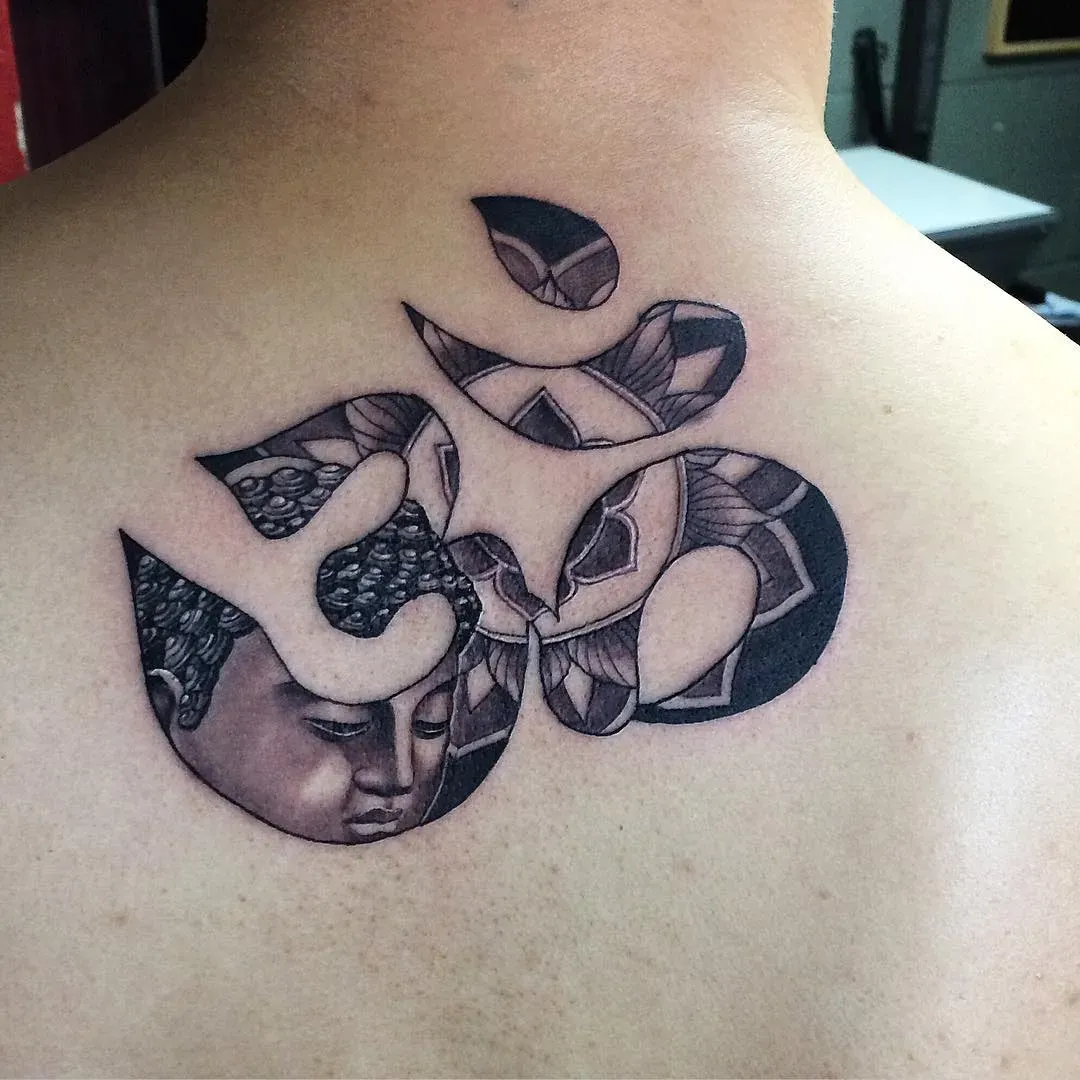Table of Contents
Thinking about getting some ink that speaks to ancient traditions? Specifically, exploring indian tattoo designs hindu? It’s a path many walk, drawn by the rich history and deep symbolism. But let's be real, slapping a deity on your skin without understanding what it means is like ordering complex street food and not knowing the ingredients – potentially cool, potentially a mistake. These aren't just cool pictures for your arm; they carry weight, history, and sometimes, specific cultural or religious significance.
More Than Ink: Understanding Indian Tattoo Designs & Hindu Meanings
More Than Ink: Understanding Indian Tattoo Designs & Hindu Meanings
Beyond the Pretty Picture: Why Meaning Matters
So, you're digging into indian tattoo designs hindu, huh? Good. It's way deeper than just picking a cool picture off Instagram. Think about it: these symbols have been around for thousands of years, tied to complex philosophies, stories, and ways of life. Getting one is like wearing a piece of that history on your skin. Ignoring the meaning is like buying a vintage sports car just because it looks fast but never lifting the hood or learning how to drive stick. You miss the whole point.
Many people get drawn to the aesthetic – the intricate lines, the powerful imagery of deities like Shiva or Ganesh, the calming look of an Om symbol. And yeah, they *are* visually stunning. But each element, each deity, each mantra holds specific energy and narrative. Ganesh isn't just an elephant-headed dude; he's the remover of obstacles. Shiva isn't just a cool ascetic; he embodies destruction and creation, the cycle of the universe. Understanding even the basics stops your tattoo from being a costume and makes it something personal and potent.
Considering a Hindu Tattoo? Ask Yourself This:
- What specific deity or symbol speaks to you and why?
- Are you comfortable with the potential questions or interpretations others might have?
- Have you researched the traditional placement or context for this symbol?
- Is this something you feel a genuine connection to, beyond the look?
The Weight of Symbols: It's Not Just Generic "Hindu"
It's easy to lump everything under the umbrella of indian tattoo designs hindu. But Hinduism itself is incredibly diverse, with countless traditions, deities, and regional variations. A symbol sacred in one sect might have a different emphasis or story elsewhere. For instance, the Trishul (Shiva's trident) represents different things depending on the context – power, the three gunas (states of matter), or even the past, present, and future. Knowing which layer of meaning resonates with *you* is crucial.
Putting a sacred symbol on your body is a commitment. In some traditional views, tattoos, especially of deities, require respect and are placed on 'clean' parts of the body, typically above the waist. While modern interpretation offers flexibility, being aware of these traditional perspectives shows respect for the culture you're drawing from. It elevates the tattoo from a mere design choice to a thoughtful, perhaps even spiritual, act.
Iconic Symbols: Popular Indian Tattoo Designs Hindu Featuring Deities & Om
Iconic Symbols: Popular Indian Tattoo Designs Hindu Featuring Deities & Om
The Heavy Hitters: Deities You See Everywhere
When you look at indian tattoo designs hindu, certain figures pop up constantly. Shiva, the destroyer and transformer, often shown with a third eye, snakes, and the Trishul, is a massive one. People get Shiva for strength, letting go of the old, or embracing change. Then there's Ganesh, the beloved elephant-headed god, the remover of obstacles and the patron of beginnings. A Ganesh tattoo is pretty common for folks wanting good luck or needing a push past a tough spot. Durga or Kali, the fierce goddesses, represent power, protection, and the destruction of evil – not exactly lighthearted ink, but potent.
These aren't just mythological characters; they represent aspects of the universe and human experience. Getting one inked means you're resonating with that specific energy or quality. It's less about worship for many wearers and more about aligning yourself with that principle.
Common Deities and What They Often Represent:
- Shiva: Destruction, creation, transformation, meditation, asceticism.
- Ganesh: Removing obstacles, new beginnings, wisdom, intellect.
- Durga/Kali: Power, protection, overcoming evil, fierce energy.
- Krishna: Love, divine playfulness, guidance, dharma.
- Hanuman: Strength, devotion, loyalty, perseverance.
Beyond the Gods: Om and Other Sacred Marks
let's talk Om. You see it everywhere, right? On pendants, t-shirts, and yes, in loads of indian tattoo designs hindu. Om (or Aum) is considered the primordial sound of the universe, the vibration from which everything originated. It represents the essence of ultimate reality, consciousness. Getting an Om tattoo is often about connecting to that universal energy, finding peace, or signifying a spiritual path. It's simple visually, but philosophically, it's huge.
Other popular symbols include the Trishul, which we touched on briefly, often linked to Shiva but also representing the past, present, and future, or the three gunas. The lotus flower is another big one, symbolizing purity, spiritual awakening, and overcoming obstacles, as it grows beautifully from mud. You'll also find yantras – geometric diagrams used in meditation and ritual – and mantras in Sanskrit script, each with specific purposes and energies.
Ever wonder why someone chose a tiny Om on their wrist versus a full-back Shiva? It's often about the personal connection to the symbol's meaning and how much of that energy they want to carry, and display.
Finding Your Personal Symbolism in the Pantheon
With so many options in indian tattoo designs hindu, how do you pick? It starts with introspection. What challenges are you facing? What qualities do you admire or wish to cultivate? Are you drawn to the fierce protection of Kali, the steady wisdom of Ganesh, or the universal hum of Om? Maybe a less common symbol like a specific mudra (hand gesture) or a chakra diagram resonates more deeply with your personal journey.
Don't just grab the first cool picture you see. Read up on the stories, the philosophy, and the different interpretations. Talk to people who understand the traditions, if possible. Your tattoo should feel like an extension of your inner world, not just external decoration. It's about finding the specific thread within the vast tapestry of Hindu symbolism that is uniquely yours.
Placement & Style: Making Your Hindu Tattoo Vision Real
Placement & Style: Making Your Hindu Tattoo Vision Real
Placement Isn't Random: Where Does it Go?
so you've done the homework, you've picked a symbol or deity for your indian tattoo designs hindu journey that actually means something to you – awesome. Now, where on your body does this thing go? This isn't just about what looks good in a tank top. Traditionally, certain parts of the body are considered more 'pure' or appropriate for sacred symbols, usually above the waist. Putting a deity tattoo on your foot, for example, might be seen as disrespectful by some traditionalists. Your upper arm, shoulder, back, or chest are generally safer bets. But even within that, consider the visibility. Do you want this deeply personal symbol front and center, or is it something more private? The placement itself adds another layer of meaning to the ink.
Finding Your Artist for Indian Tattoo Designs Hindu: From Concept to Skin
Finding Your Artist for Indian Tattoo Designs Hindu: From Concept to Skin
More Than Just Ink: Finding Someone Who Gets It
you've wrestled with the symbolism, figured out the perfect spot, and you're feeling pretty solid about the *what* and *why* of your indian tattoo designs hindu. Now comes the arguably most critical step: finding the human who's actually going to put this permanent art on your body. This isn't the time to pick the cheapest place or the artist who just happens to be free next Tuesday. You need someone who respects the culture, understands the nuances of the imagery, and, frankly, can execute complex line work and potentially intricate detail without it looking like a hot mess. Finding an artist skilled specifically in cultural or spiritual designs, especially those rooted in Hindu iconography, takes effort. It's not like finding someone who can do a decent skull.
Many artists are technically skilled but have zero understanding of the weight behind a Ganesh or a Kali tattoo. You don't want someone just tracing a picture they found online. You want someone who asks questions, who shows genuine interest in the meaning you're bringing to the piece, and whose portfolio demonstrates they can handle detailed, potentially sacred imagery with respect and precision. Look for artists who specialize in, or at least have significant experience with, cultural tattoos, religious symbols, or intricate dot work and fine lines often found in traditional Indian art.
Questions to Ask a Potential Artist:
- Have you done indian tattoo designs hindu before? Can I see examples?
- How do you approach designing cultural or religious symbols?
- Are you familiar with the specific deity or symbol I'm considering?
- What's your process for ensuring the design is accurate and respectful?
- What's your experience with the style (e.g., blackwork, color, dotwork) I'm interested in?
Portfolio Deep Dive and Consultation Clues
Once you've narrowed down your list of potential artists for your indian tattoo designs hindu, stalk their portfolio like your future ink depends on it – because it does. Don't just glance at the photos. Zoom in. Look at the line work – is it clean and consistent, or shaky and blown out? Check the shading and dot work – is it smooth or patchy? If they have examples of cultural or religious tattoos, scrutinize those hardest. Do they look authentic and well-executed, or do they seem generic or even offensive? Pay attention to healed photos, not just fresh ones; a lot of detail can disappear or blur as a tattoo heals.
A consultation is non-negotiable. This is your chance to gauge their understanding and enthusiasm. A good artist will listen more than they talk, ask thoughtful questions about your vision and the meaning behind it, and offer insights based on their experience. They should be honest about what's feasible on skin and suggest modifications that enhance the design while respecting the original meaning. If they seem dismissive, rush you, or act like your ideas are inconvenient, walk away. Seriously. Your skin isn't a canvas for someone's ego or impatience.
More Than Skin Deep: Final Thoughts on Hindu Tattoos
So, you've navigated the world of indian tattoo designs hindu, from understanding the heavy hitters like Shiva and Ganesh to figuring out if an Om symbol is right for your ankle or your chest. It’s clear this isn't a quick decision based on a cool picture you saw online. It demands thought, research, and a genuine respect for the traditions and meanings embedded in these symbols. Your tattoo is a statement, a piece of art, and potentially, a personal connection to something ancient. Choose wisely, find an artist who truly understands the craft and the cultural context, and wear your design with the understanding it deserves. It's more than just ink; it's a story on your skin.